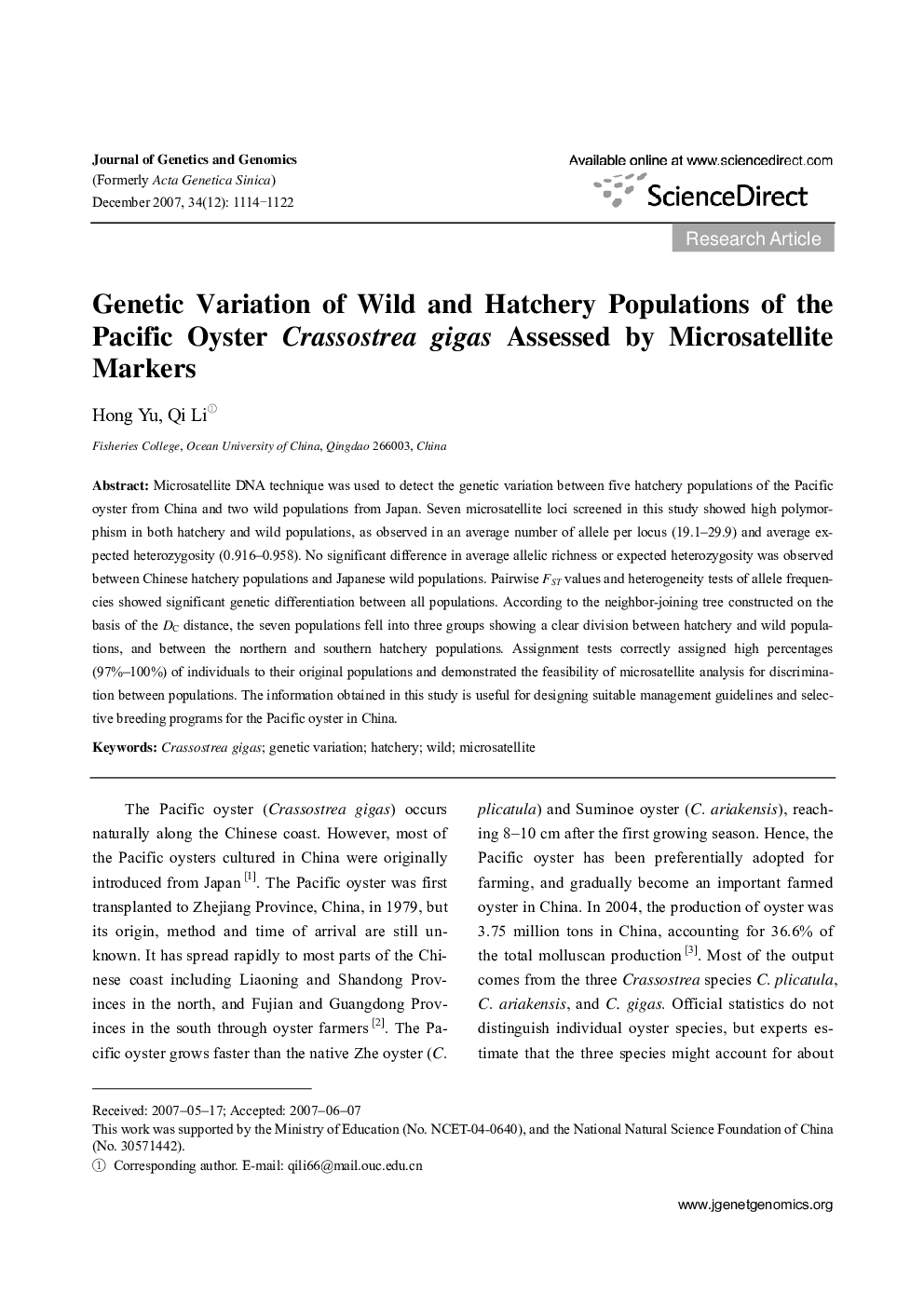| Article ID | Journal | Published Year | Pages | File Type |
|---|---|---|---|---|
| 2788199 | Journal of Genetics and Genomics | 2007 | 9 Pages |
Microsatellite DNA technique was used to detect the genetic variation between five hatchery populations of the Pacific oyster from China and two wild populations from Japan. Seven microsatellite loci screened in this study showed high polymorphism in both hatchery and wild populations, as observed in an average number of allele per locus (19.1–29.9) and average expected heterozygosity (0.916–0.958). No significant difference in average allelic richness or expected heterozygosity was observed between Chinese hatchery populations and Japanese wild populations. Pairwise FST values and heterogeneity tests of allele frequencies showed significant genetic differentiation between all populations. According to the neighbor-joining tree constructed on the basis of the DC distance, the seven populations fell into three groups showing a clear division between hatchery and wild populations, and between the northern and southern hatchery populations. Assignment tests correctly assigned high percentages (97%–100%) of individuals to their original populations and demonstrated the feasibility of microsatellite analysis for discrimination between populations. The information obtained in this study is useful for designing suitable management guidelines and selective breeding programs for the Pacific oyster in China.
